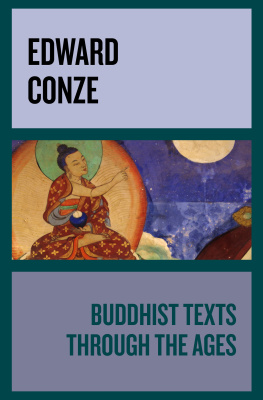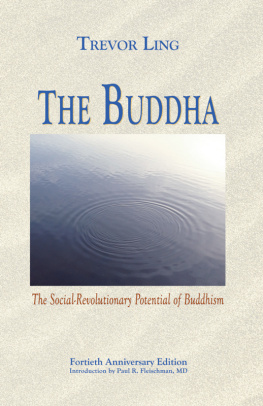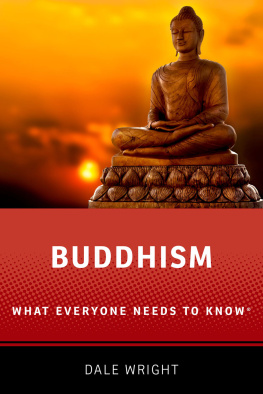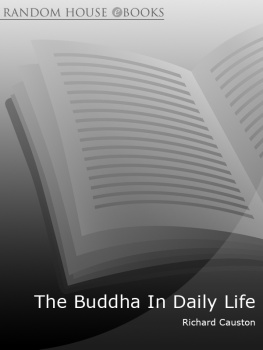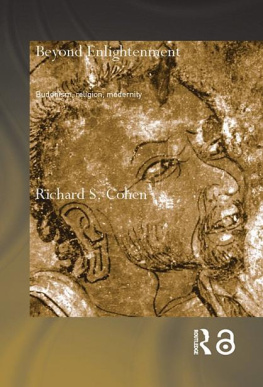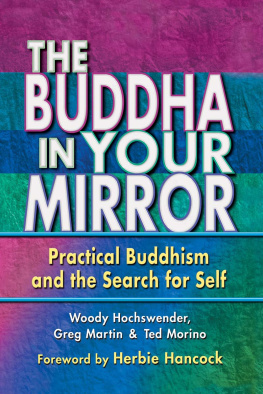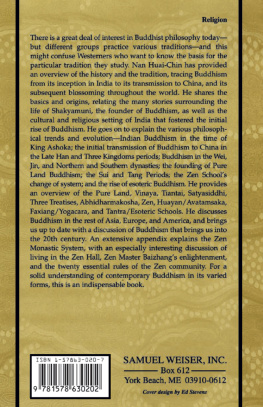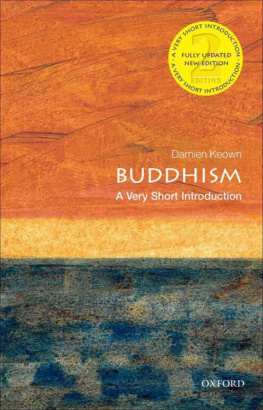Indian Buddhism
A.K. Warder
MOTIlAl, BANARSIDASS PUBLISHERS PRIVATE LIMITED DELHI
First Edition: Delhi, 1970 Second Revised Edition: Delhi, 1980 Third Revised Edition: Delhi, 2000 Reprint:Delhi, 2004 <0 A.K. WARDER All Rights Reserved
ISBN: 81-208-0818-5 (Cloth) ISBN: 81-208-1741-9 (Paper)
MOTILAL BANARSIDASS
41 U.A. Bungalow Road, Jawahar Nagar, Delhi 110 007 8 Mahalaxmi Chamber, 22 Bhulabhai Desai Road, Mumbai 400 026 236, 9th Main III Block, Jayanagar, Bangalore 560 011 120 Royapettah High Road, Mylapore, Chennai 600 004 Sanas Plaza, 1302 Baji Rao Road, Pune 411 002 8 Camac Street, Kolkata 700 017 Ashok Rajpath, Patna 800 004 Chowk, Varanasi 221 001
Printed in India
BYJA1NENDRA PRAKASH JAIN ATSHRI JA1NF.NDRA PRESS, A-45 NARAINA, PHASE-1, KF.W DF.LHl-110 028 AND PUBUSHED BY NARF.NDRA PRAKASH.JAIN FOR MOTIIAL BANARSIDASS PUBLISHERS PRIVATE LIMITED, BUNGALOW ROAD, DEl.Hl-110 007
This Edition embodies the results of further sifting of contexts to find closer translations of Buddhist terms, or rather of ancient Indian vocabulary in general, but sometimes specialised to express Buddhist concepts. Languages do not match word for word, so this task is impossible, nevertheless one can try to exclude inaccuracy and vagueness. The Buddhas teaching was about experience, which cannot be reached by words, but only indicated approximately. The important thing is not to be misleading where the gap between reality and everyday language is great.
Here we use entrance ( dyatana , such as a sense entrance) instead of the vague, but time-honoured, sphere. Element is replaced by base ( dhatu , because it is a source or ore or root). Nature becomes being ( bhava , to be consistent with other usages). For existence we now have reality ( bhuta ). For the inaccurate tranquillity we read assurance (prasrabdhi ). Emotion, which would belong to the wfong group (the forces), just as before sensation would belong to matter, is at last replaced by experience ( vedand , being essentially the same as experienced or experiencing, vedayita). Insight becomes certainty where it stands for abhijna. Conscious becomes alert {snmprajdtm ). Peculiarity becomes feature (aluha).
The somewhat obscure pre-Buddhist term nnmnnipa, generally translated here as sentient bodv (matter plus sentience, a living body), is a compound ol rupa, meaning originally appearance, then in Buddhism split into sight* (object) and matter, and nama, covering language, intelligibility and organisation, in Buddhism sentience or the functioning of perception and volition.
It was understood that the text would be reproduced photographically, therefore all substituted words and phrases must be equal in extent to the deleted matter replaced. Consequently there is no expansion or elaboration here. Only later the Publishers decided to re-set, which has improved the appearance of the book but not allowed the author to make more substantial revisions. The biggest change here is the substitution of a closer and more detailed account of the Laghukalacakra.
Meanwhile the study of Buddhist literature has continued in Indian Kavya Literature , with story-telling in Vol. VI in connection with Nagarjuna, Atisa and Ksemendra; also Vallana. Vidyakaras anthology, Vairocana and Pali and Sinhalese literature of the +12 and +13 will be found in Vol. VII.
A. K. Warder March 1999
The Second Edition is revised in the light of Buddhist research since 1965, when the First was completed. The largest revision is the section on Dinnaga, the Sanskrit materials collected by Kitagawa (1965) and Hattori (1968, etc.) making it possible to offer a fairly c omprehensive account of his philosophy based on his own words. It is a heavy loss to these sparsely cultivated studies that Hidenori Kitagawa did not live to complete the English translation of Pramanasamuccaya II-IV, and VI, with additional Sanskrit fragments, which he began when the author invited him to Toronto as Visiting Professor in 1972.
The question of the school to which Dinnaga belonged has proved strangely intractable. His influence was so great that his work was appropriated by practically all schools of philosophy, Buddhist and non-Buddhist, adapted or interpreted to harmonise with their views. The Sthaviravada on the one hand and the Vijnanavada on the other seem to accept his epistemological doctrines, studying his works, or more often those of his successor Dharmakirti and others, in their own schools. Professors Hattori and Kitagawa, among others, have assumed, following certain ('.hinese traditions, that Dinnaga was a Vijhanavadin, though this appears to lead to insuperable difficulties of interpretation. In the First Edition we followed Stcherbatsky in taking Dinnaga as a follower of Asaiiga who retreated from idealism to realism and effectively established a new school of Buddhism, which we called the Pramana School. The thesis of Frauwallner on the two Vasubandhus was accepted and it was naturally assumed that Dinnaga was a pupil of the earlier one, Asangas brother, though Frauwallner himself was vague and afterwards inconsistent about this. Frauwallners chronological arrangement of Dinnagas works and perception of his philosophical evolution from idealism to realism was likewise followed. Doubts about the object of the Alambanapariksa, however, threw this whole evolution in question and seemed to confirm the statements of Vacaspatimisra and others ihat Dinnaga, as well as Dharmakirti, was a Sautrantika. This would
make it likely that he was a pupil of the Vasubandhu who wrote the Abhidharmakosabhdsya . The authors student, A.S. Moriya, has made a thorough study of this problem, in a Ph.D. thesis on Dharmaklrti, and concluded that both he and Dirinaga were Sautrantikas. This conclusion has been adopted in this Second Edition, and the appropriate revisions made, the most essential evidence being noted.
The question of objects, a word which has been used to translate so many Sanskrit and Pali terms and which was the starting point for our clarification of Dirinagas views, had led to further investigations even before the First Edition was published, a note being added in the Index (p. 599) to the effect that alambana meant only the internal object in consciousness. This note made in 1968 when indexing from the page proofs was subsequently expanded into the paper Objects published in 1975. The results of these studies have been incorporated in the present Edition, translating alambana as support and so on.
Related to all the above discussions is the question of perception (variously used by writers in English) and sensation and of a more precise understanding of the ancient Buddhist doctrine of the five groups ( skandhas ). It seems closer to translate pratyaksa, knowledge or cognition through the senses, as sensation, reserving perception for the ancient term samjna, the mental registering of a sense experience which later is taken to include identifying it through some concept. In the scheme of the groups, sensation or sense experience, the five senses, is included in matter ( riipa ). It therefore seems inappropriate to translate vedana as sensation as hitherto. Being the reaction of happiness, unhappiness, elation, depression or equanimity, according to the schools, to an experience, vedana seems to come fairly close to emotion and is so translated in this Edition. Perhaps it was originally as vague in reference as the English word feeling, or as broad as experience in general, but by using emotion, we may hope to indicate the direction in which the term was becoming specialised in more systematic analysis and to separate it from the physical experience of the senses.
The fundamental concept of dharma has been further studied by the author and the results published in the essay Dharmas and Data (1971). The conclusion there that a dharma is most nearly equivalent to a principle, rather than to an element or a sense datum or simply a phenomenon, has been embodied in the present Edition. The paper The Concept of a Concept (1971) entails no revision but is rather an appendix on the question of there being two levels of discourse in the Buddhas words, the everyday and the philosophical, especially as worked out in the Sthaviravada school (cf. pp. 146-8 below). Related to it is the paper Is Nagarjuna a Mahayanist? (1973), reflecting more precise translations of that philosophers critiques given in the textbook iOutline of Indian Philosophy (University of Toronto 1967, Motilal Banarsidass 1971; which also contained a first revision of our study of Dinnaga in the light of the work being done by Kitagawa and Hattori). This progress in understanding the* author of the Mulamadhyamakakdrikd has led to some revisions below (especially on p. 361).


